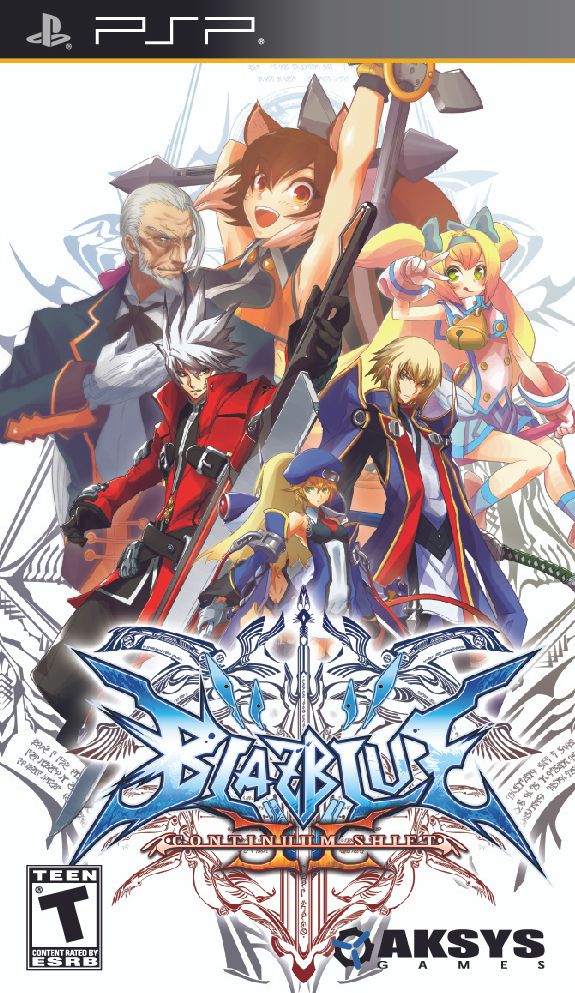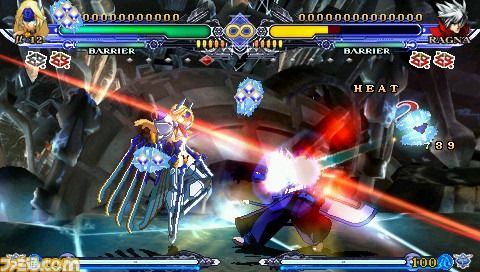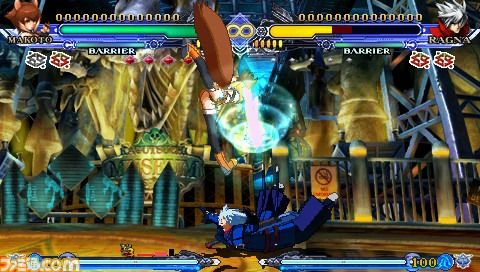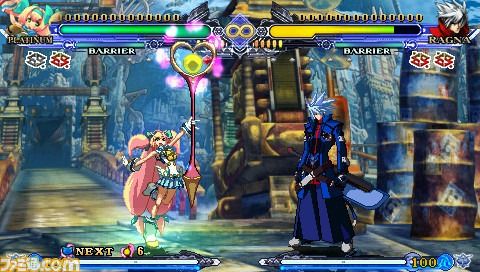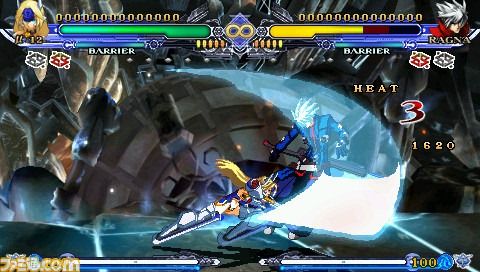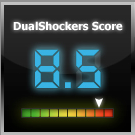I’ll be the first to admit I’m not a huge fan of fighters – not because I dislike them, but because I usually crash and burn while playing them against anyone who has even a slight inkling of skill. However, the BlazBlue franchise is one that I’ve been drawn to, if for nothing else than the awesome artwork and the ridiculously over-the-top characters and story.
BlazBlue: Continuum Shift II continues that tradition, even though it is simply an enhanced “port”, for all intents and purposes, of the console-focused BlazBlue: Continuum Shift. Everything that was in the original titles is in here, packed into a smaller package, on a smaller screen. That, however, doesn’t mean the experience itself is diminished. Quite the contrary, actually. All the content from the console versions is present here, including the previously DLC-only characters like Makoto, Platinum the Trinity and Valkenhayn.
I’m quite amazed that this franchise has garnered the following it has, and it can certainly stand its own ground against the giant fighting games like Marvel vs. Capcom and Street Fighter, which are the titles most people’s minds jump to when thinking of the genre. In fact, I’d go so far to say that those gamers out there who consider themselves fans of this genre and haven’t played BlazBlue: Continuum Shift in some manner are doing themselves a disservice.
BlazBlue: Continuum Shift II, like its predecessors, is a 2D, one-on-one fighting game, with each character having a variety of attacks, the most interesting of which is the attacks that are specific to each character, called Drive attacks. Because there’s such a variety of fighting styles represented in the characters, these Drive attacks tend to focus on those variations and really play to each character’s strengths. While there may not be a bazillion characters to choose from like other fighting games, BlazBlue: Continuum Shift II focuses on deep, intricate combat and characters that are vastly different in style from each other. This allows the player to easily find the characters that fit their own style and go with them, instead of having a dozen characters splayed out that may act very similar to each other.
Instead of having similar fighters, each one is extremely different from the other, offering a variety of gameplay experiences all in the same title, depending on the fighter and the playing style you choose. This, in my opinion, is one of this particular title’s selling points, and something fans of other fighters really should think hard about. The variety here is unmatched in most other games of the genre.
Adding to that variety is that each character also has a unique storyline to tell. Choose the characters that suit your play style best, then follow their unique story. The only real downside here is that the dialog and plot itself tends to be a bit over-the-top, but that is also par for the course with Japanese titles of this sort. Anyone who enjoys niche Japanese games to any degree is going to expect this, although it may throw off those who aren’t expecting it.
One of the downsides of fighting games for me in general is the over-emphasis placed on complicated input combinations to pull off more powerful and specific attacks. While that still exists here, the option also is presented to lessen the complexity of this process, which is a god-send to beginners like myself. It’s akin to what Super Street Fighter IV 3D did on the 3DS, where it simplified powerful attacks to a tap on the touch-screen.
I’m well aware that many hardcore fighting fans balk at even having the option present to simplify attack inputs, but what would you rather happen – new players to the genre you love enter, get turned off by the crazy-complex controls and never play again, or they play the game, enjoy it because it’s beginner-friendly, then learn to pick up on the more complicated controls over time?
Even though the controls themselves can be simplified, which is a great help to beginners, the tutorials are actually kind of wonky and confusing at various parts. This is something else that drives me batty about fighting games – different buttons are called different things based on the attacks they perform. For example, “D” is supposed to be the “X” button, and “H” is supposed to be the “O” button. Seriously people? Talk about confusing. Also, some of the tutorial instructions just plain don’t make sense. Luckily, if you’re not really playing against anyone (and thus don’t have the disparity of skill levels), you can pretty much just jump into the game and wing it, so to speak.
The gameplay itself is a thing of beauty, even on the smaller screen. The artwork comes across amazingly well, and everything looks and runs smooth. The only thing that is a bit off-putting is the audio, especially the characters’ voices, as the tiny PSP speakers tend to make the voices sound like they’re coming from really far away. Not that that really will turn anyone off, but it is a point I must bring up nonetheless.
It did bring me great pleasure when I successfully pulled off combos or initiated a special Drive attack, as these are flashy and certainly satisfying to watch. It really brings out the brilliance of the PSP screen to a degree that I’ve rarely seen before. This game, like its console cousins, is visually stunning, to say the least, especially if you’re a fan of the art style and character design. Speaking of character design – you know that variety I was talking about earlier? That comes across here, as well. The characters are vastly different, from the scantily clad Mokoto (which I found one of the most fun characters to play and was previously available via DLC only in the console versions) to the creepy Carl Clover and his robot sister which is just a pain to deal with during combat (but hey, if you like his style, the more power to you).
There are also a variety of modes available, enough to keep you busy for quite a while. From the standard story and ad-hoc multiplayer modes, to the new abyss mode, which challenges you to see how far you can get against a variety of standard and boss-like opponents (this is basically a souped-up survival mode). The disappointing thing here is that there is no true online multiplayer, you can only play against someone in ad-hoc mode. This meant I certainly couldn’t test out how the multiplayer performed, since I don’t know anyone else with this title. But it is there, nonetheless; I would have just preferred to see some true multiplayer going on up in there.
Ultimately, though, this is probably the best fighting game you’ll find on a hand-held system. It has everything you’ve seen from the full console version, and then some. The new characters (which were previously DLC-only) and abyss mode certainly round out the features of this already packed-full title. If you’re a fighting game fan, and especially a fan of this style of fighter specifically, you owe it to yourself to check it out. BlazBlue: Continuum Shift II just works and performs very well on the PSP, a system that on which you wouldn’t think a fighting game would work. Sure, there are a few hiccups, mostly in the audio and tutorial department, but those failings don’t mean you can pass it up. Mad props to Aksys for getting the bright idea to bring this great franchise over to handheld platforms.
-
Game: BlazBlue: Continuum Shift II
- Platform Reviewed: PSP
- Developer: Arc System Works
- Publisher: Aksys Games
- Release Date: May 31, 2011
- MSRP: $29.99
- Review Copy Info: A download code for this title was provided to DualShockers, Inc. by the publisher for the purpose of this review.

